How Much Ventilation Does A Chicken Coop Need?
- February 8, 2024
- 0 comment
Ventilation within a chicken coop plays a fundamental role beyond merely introducing fresh air; it is vital for ensuring the health, comfort, and general welfare of the poultry. Through my personal experience in managing a backyard chicken coop, I have come to understand that the effectiveness of ventilation significantly influences the health of my chickens and the condition of their habitat.
In this discussion, I aim to convey the knowledge and practical steps I’ve employed, based on both qualitative observations and specific measurements, to optimize the ventilation in my chicken coop to the highest standard achievable.
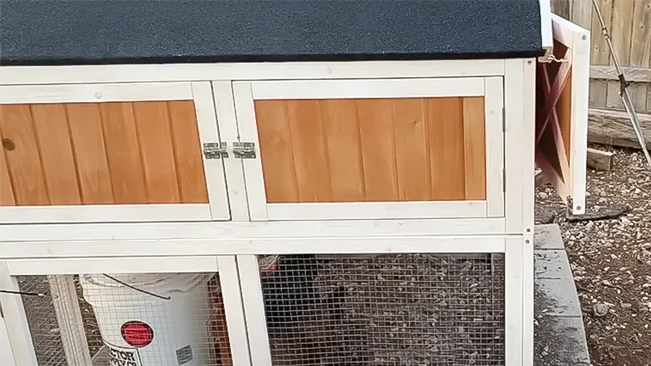
Maintaining adequate ventilation within a chicken coop is essential throughout the entire year for several reasons. During the hotter months, proper airflow is crucial for keeping the chickens cool and ensuring the air within the coop does not become saturated with harmful ammonia gases. Conversely, in the colder months, ventilation plays a key role in preventing the occurrence of frostbite among the birds. It’s important to note that ammonia, being lighter than air, tends to rise.
List for How Much Ventilation Does A Chicken Coop Need:
- Understanding the Importance of Ventilation
- Quantitative Measurements for Optimal Ventilation
- Methods for Providing Ventilation in Your Chicken Coop
- Ventilation Solutions
Therefore, installing ventilation points at higher areas within the coop can facilitate the effective escape of ammonia, enhancing the overall air quality. It is critical to understand that any detectable level of ammonia within the coop poses a risk to the chickens. Ammonia not only has the potential to harm the poultry’s delicate respiratory systems but is also corrosive, which could lead to significant health issues, potentially resulting in the loss of birds or incurring substantial veterinary expenses.
Prior to visiting this blog, you might already be aware of the significance of ensuring proper ventilation while also keeping the coop free from drafts, as both factors are vital for the health and safety of the chickens. Achieving a balance between adequate ventilation and a draft-free environment primarily depends on the strategic placement of ventilation openings.
1. Understanding the Importance of Ventilation
Grasping the critical role of ventilation in a chicken coop was a revelation in my journey as a poultry keeper. As I embarked on designing my coop, it became evident that effective ventilation encompasses more than just ensuring a few air passages. Proper airflow is essential for eliminating harmful elements such as excess moisture, ammonia, and carbon dioxide, which can accumulate within the confined space of the coop.
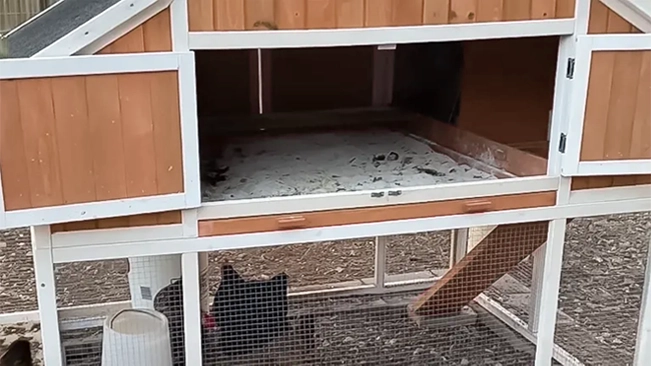
By facilitating the exchange of indoor air with the outdoor environment, ventilation helps in maintaining an optimal balance crucial for the health and comfort of the chickens. This continuous air movement is not only imperative for preventing the onset of respiratory illnesses among the birds but also plays a significant role in temperature regulation, regardless of the external weather conditions.
Additionally, a well-ventilated coop is less hospitable to pests and pathogens, thereby reducing the likelihood of infestations and disease spread. Understanding and implementing a robust ventilation system has therefore become a cornerstone of effective chicken coop management, underscoring the importance of designing a living space that supports the overall well-being of the flock.
2. Quantitative Measurements for Optimal Ventilation
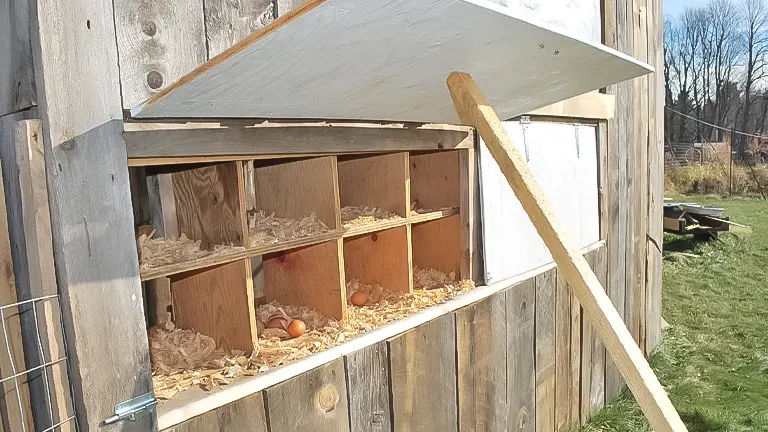
The rule of thumb I discovered through research and experience suggests that for every 10 square feet of coop floor, there should be 1 square foot of ventilation. This ratio has served as a foundational guideline in designing my coop’s ventilation system. However, it’s not just about the quantity of ventilation but also its placement. Ventilation openings should be positioned to ensure cross-ventilation without creating direct drafts on the birds, especially during colder months.
3. Methods for Providing Ventilation in Your Chicken Coop

- Installing vents above the perch or roost areas is an excellent way to ensure consistent natural airflow throughout the year. While windows can offer beneficial ventilation during the warmer months, they may introduce unwanted drafts, so it’s advisable to seal them properly during the winter season.
- Positioning your chickens’ water source outside of the coop can significantly reduce the accumulation of excess moisture inside.
- For those raising chickens in barns or larger enclosures, mechanical ventilation systems, such as fans, can be highly effective. These systems enhance air circulation across more expansive areas. It’s important to select a fan that is specifically designed to operate in dusty environments to prevent malfunctions caused by dust accumulation. For coops not connected to an electrical supply, solar-powered fans are a viable alternative.
- Installing a wind turbine ventilator on the coop’s roof can also be beneficial. This type of system operates by using the wind to rotate blades, effectively drawing air out of the coop. However, its effectiveness is contingent upon wind presence, so it should be complemented with other ventilation strategies to ensure adequate airflow at all times.
4. Ventilation Solutions

- Fixed Ventilation: My coop features fixed vents along the upper part of the walls. These allow continuous airflow and are crucial for removing warm, moist air that rises. The downside? They can’t be closed during extreme weather, which sometimes requires additional insulation strategies in winter.
- Adjustable Vents: I also installed adjustable vents that can be opened or closed depending on the weather. These are invaluable during seasonal transitions, allowing me to control the amount of air exchange based on temperature and humidity. The con is the extra daily management they require.
- Windows: Windows not only provide ventilation but also natural light, which benefits the chickens’ health and egg production. However, they must be secured with predator-proof screens and shutters for safety, adding complexity and cost.
- Roof Vents: To enhance airflow, I incorporated roof vents that help expel hot air in the summer. They’re effective but require careful placement to prevent water ingress during rainstorms.
Decision-Making Factors
In my experience, the key factors in designing a chicken coop ventilation system are:
- Climate: The primary determinant of how much and what type of ventilation you’ll need.
- Flock Size: Larger flocks produce more heat and moisture, necessitating more ventilation.
- Coop Design: The coop’s design, including its orientation and insulation, will affect ventilation needs.
My Recommendation
Based on my journey, the best ventilation setup is one that combines fixed and adjustable vents with windows. This system offers flexibility to adapt to changing weather, ensures a constant supply of fresh air, and provides the benefits of natural light. It’s a balanced approach that has kept my chickens healthy, happy, and productive.
Related Articles:
- Best Bedding For Chickens
- Best Safe Chicken Coop Heater
- 8×8 Chicken Coop Plans
- Turning a Shed Into a Chicken Coop
- How to Make a Chicken Coop Out of Pallets
- Best Sand for Chicken Coop
- How To Insulate a Chicken Coop
- How To Heat a Chicken Coop
- How To Keep Water from Freezing in Chicken Coop
- How to Build a Chicken Coop
- How To Build Chicken Nesting Boxes
- How to Raise Happy and Healthy Chickens in Your Backyard
- When Can Chicks Go Outside? Timing and Tips for a Smooth Transition
- 12 Reasons why Ducks are Better than Chickens
- Best Automatic Chicken Coop Doors 2024: Expert Reviews & Buyer’s Guide
- Best Fans for Chicken Coop 2024: Effective Cooling Solutions Reviewed
Final Conclusion
Ventilation might not be the most glamorous aspect of chicken keeping, but it’s undoubtedly one of the most important. My advice to fellow and prospective chicken keepers is to prioritize ventilation in your coop design. Use the quantitative guideline as a starting point, adapt to your specific circumstances, and always err on the side of more ventilation rather than less. Your chickens will thank you with good health and plentiful eggs!
Frequently Asked Questions
- Why is ventilation important for a chicken coop?
Ventilation is crucial for maintaining a healthy environment inside the chicken coop. It helps remove harmful gases like ammonia and carbon dioxide, reduces excess moisture that can lead to mold and mildew, and keeps the air fresh to prevent respiratory diseases in chickens. - How much ventilation does a chicken coop need?
The general guideline is to provide at least 1 square foot of ventilation for every 10 square feet of coop floor space. However, this can vary based on your climate, coop design, and the number of chickens you have. - What is the best location for ventilation openings in a coop?
Ventilation openings should be placed above the chickens’ roosting area to allow warm, moist air to escape. Ensure that these openings are positioned to prevent direct drafts on the chickens, especially during colder months. - Can windows be used for coop ventilation?
Yes, windows can provide excellent ventilation, especially during warmer months. However, they should be designed to close securely to prevent drafts in colder weather and be covered with predator-proof mesh. - Is it possible to have too much ventilation in a coop?
While adequate ventilation is key, excessive ventilation can create drafts, leading to cold stress among chickens, especially in winter. The goal is to balance fresh air intake with protection from elements. - How do you ventilate a chicken coop in winter without causing drafts?
In winter, use adjustable ventilation options like vents or windows that can be partially opened to minimize drafts. The openings should be positioned well above the roosting area to keep cold air from directly hitting the chickens. - Do I need to add fans for additional ventilation?
In larger coops or those with poor natural airflow, fans can help improve ventilation. Ensure the fans are designed for dusty environments and consider solar-powered options if electricity is an issue. - How does ventilation prevent pests and diseases in the coop?
Proper ventilation helps control humidity and reduce ammonia levels, which can deter pests like mites and help prevent respiratory diseases, making the coop less hospitable for pathogens and parasites. - Should the coop’s ventilation be open year-round?
Yes, ventilation should be maintained year-round to ensure continuous air exchange. Adjust the size of the openings based on seasonal needs to manage temperature and airflow. - How do I know if my coop has adequate ventilation?
Signs of adequate ventilation include low ammonia smell, dry bedding, and comfortable, healthy chickens. Monitor the coop for condensation, odors, and the health of your chickens to determine if adjustments are needed.
We’re eager to hear your insights! Share your personal experiences and observations on the topic of chicken coop ventilation in the comments section below. Your knowledge and tips could greatly assist fellow poultry enthusiasts in understanding how much ventilation their chicken coops need. Your input can guide others to make well-informed choices for the health and comfort of their flocks!

Edward Smith
Forestry AuthorWoodworking is about more than crafting; it's a harmonious connection with nature, mastering tools, and preserving our environment. I'm here to share my knowledge and experiences with you, forging a future where we can embrace wood's beauty and utility while safeguarding our forests' health and diversity.



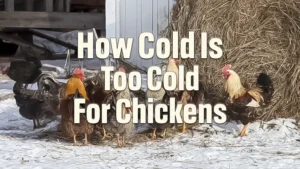

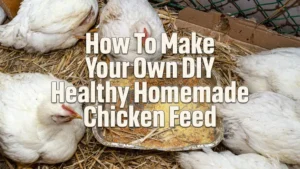

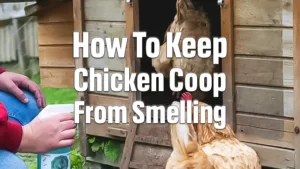





Leave your comment